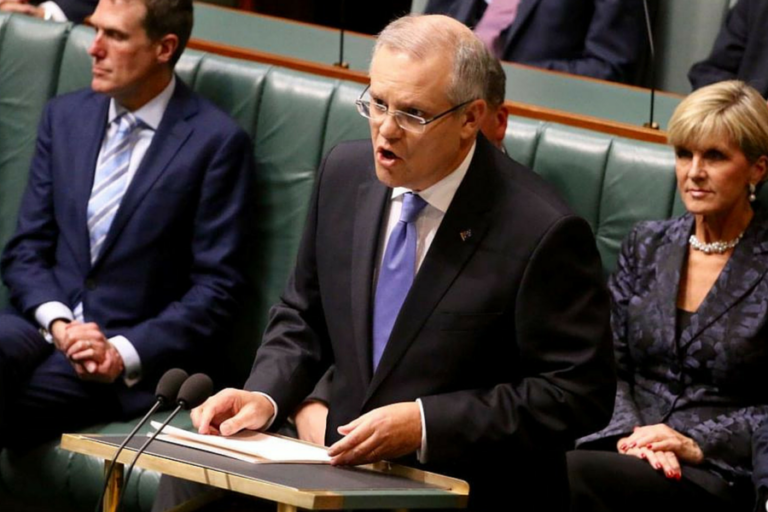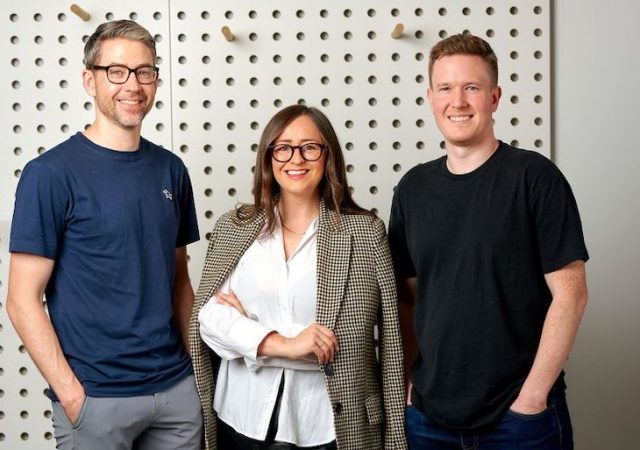Far from aiming for a moonshot, the 2017 Budget delivered by Treasurer Scott Morrison was all about encouraging Australians to “live within our means” in order to get the budget back to balance by 2020-21.
As much of the tech community expected, innovation seemed to be more of an afterthought, with a new levy on Australia’s biggest banks and measures to improve housing affordability sure to dominate the headlines for the coming days.
Alex McCauley, StartupAUS CEO, said the government has a lot of work to do to deliver on its commitment to make Australia a world-leading innovator, describing the measures introduced tonight “modest” both in their budget impact and overall effect.
“Innovation and entrepreneurship are not major focal points of this budget…in this year’s speech, entrepreneurs were not mentioned. Startups seem to have dropped off the radar,” he said.
Though it may not have been a big part of Morrison’s speech, there are hints buried in the budget papers that – maybe – something big is in the pipeline, with the Government reiterating its focus on innovation by recalling the fact it has commissioned a 2030 Strategic Plan from Innovation and Science Australia.
The Plan, to be delivered in the last quarter of 2017, will look to outline what Australia’s Innovation, Science, and Research (ISR) System “should look like into the future”, identifying key priorities the Government must address to build Australia’s innovation capabilities.
With this in mind, as well as the fact that much of NISA is still being rolled out, perhaps it makes sense the Government isn’t splashing another NISA-like sum on innovation just yet – though there is merit to the argument put forward by Shadow Treasurer Chris Bowen last week that the Government must do more to communicate the message of innovation and its possibilities to all Australians.
The Government will also develop a Research Infrastructure Investment Plan to “inform future investment in research infrastructure facilities and projects” and support greater collaboration between industry and researchers, ensuring Australia’s research capabilities meet the needs of the growing economy.
So, maybe NISA 2.0 will come with the delivery of the 2030 Strategic Plan, but in the more immediate term, there are a few nuggets to be found in the budget papers for tech and startups.
Among these is the promise of a new Crowd-Sourced Equity Framework (CSEF), finally opening equity crowdfunding up to proprietary companies, through $4.5 million in funding over four years from 2017-18 to help the Australian Securities and Investments Commission (ASIC) extend the framework.
With fintech a niche within the all-encompassing innovation space that the Turnbull Government has long seemed particularly devoted to, $1.2 million in 2017-18 will be provided to allow the Department of the Treasury conduct an independent review into the most appropriate implementation model for an open banking regime, which would require the banking to share product and customer data and open up the door for new fintech offerings.
The Government has also announced it will remove double taxation on digital currencies, such as Bitcoin, from 1 July 2017, removing an obstacle for fintechs; currently, digital currency is treated as ‘intangible property’ for GST purposes.
The regulatory sandbox put in place last year to allow fintechs to test new products more easily, will be expanded to include new types of services, including “providing more holistic financial advice”, issuing consumer credit, offering short term deposit or payment products, and operating a CSEF intermediary. The program will be extended from 12 to 24 months.
Danielle Szetho, CEO of Fintech Australia, welcomed the measures, saying, “They’re a huge step forward when it comes to growing a globally competitive Australian fintech industry, that will also deliver greater choice and improved financial outcomes for consumers.”
“It is pleasing to see that the government has clearly used the budget to reaffirm its commitment to Australia’s fintech industry, and sees this industry as a driver of increased consumer choice and jobs growth in financial services.”
Following the abolishing – or rebranding – of the 457 visa a few weeks ago, the Government will also introduce an annual foreign worker levy of $1,200 or $1,800 per worker per year on temporary work visas, and a one-off levy of $3,000 or $5,000 for those on a permanent skilled visa.
The $1.2 billion raised from the levy over the next four years will contribute directly to a new Federal-State Skilling Australians Fund.
Meanwhile, announced by Minister for Innovation, Arthur Sinodinos earlier today was a $100 million funding package that will see the creation of an Advanced Manufacturing Fund to boost innovation in the manufacturing sector.
Included in the package is $47.5 million over two years for an Advanced Manufacturing Growth Fund, aiming to help high value manufacturing businesses in South Australia and Victoria become more competitive through new processes and equipment by funding up to a third of the project cost of capital upgrades.
An Advanced Manufacturing Growth Centre will be established with $4 million in funding over two years to support small scale and pilot research projects in advanced manufacturing, while $10 million will go to the development of Innovation Labs in South Australia and Victoria, to be delivered through existing services such as the Entrepreneurs’ Programme, Industry Growth Centres, and Austrade.
The Government has also committed $26 million over four years to optical astronomy to enable Australia to become a strategic partner of the European Southern Observatory, which it stated will allow Australian researchers “new opportunities for international collaboration and greater access to world-leading astronomy infrastructure”.
Though not purely innovation-focused, a significant chunk of change has been put towards developing regional Australia. The benefits of building regional Australia’s capabilities, according to a report released by the Commonwealth Bank in March, could be significant: the regional economy could grow by $44 billion every year if regional businesses were to fully unleash their innovation potential.
A Regional Growth Fund will be established with $472 million for regional infrastructure projects; within this, $272 million will provide grants of $10 million or more for major projects to “support long-term economic growth and create jobs in regions undergoing structural adjustment”.
Another $200 million will be provided to the existing Building Better Regions Fund (BBRF) to support the construction of community infrastructure and build the capacity of regional areas, while $220 million will see the creation of a Regional Jobs and Investment Packages, aiming to create new jobs and deliver sustainable employment.
With connectivity a key issue, the Government is putting a further $60 million towards the Mobile Black Spot Program to 2019-20, adding to the existing $160 million for the program.
To bridge skills gaps, the Government will also provide $24 million over four years from 2017-18 to establish a Rural and Regional Enterprise Scholarships program to help develop opportunities for regional students.
From 2017, at least 1,200 scholarships of up to $20,000 each will be available for tertiary students in “priority fields of study” including science, technology, engineering, mathematics, and health.
Image: Scott Morrison. Source: abc.net.au.




















Trending
Daily startup news and insights, delivered to your inbox.